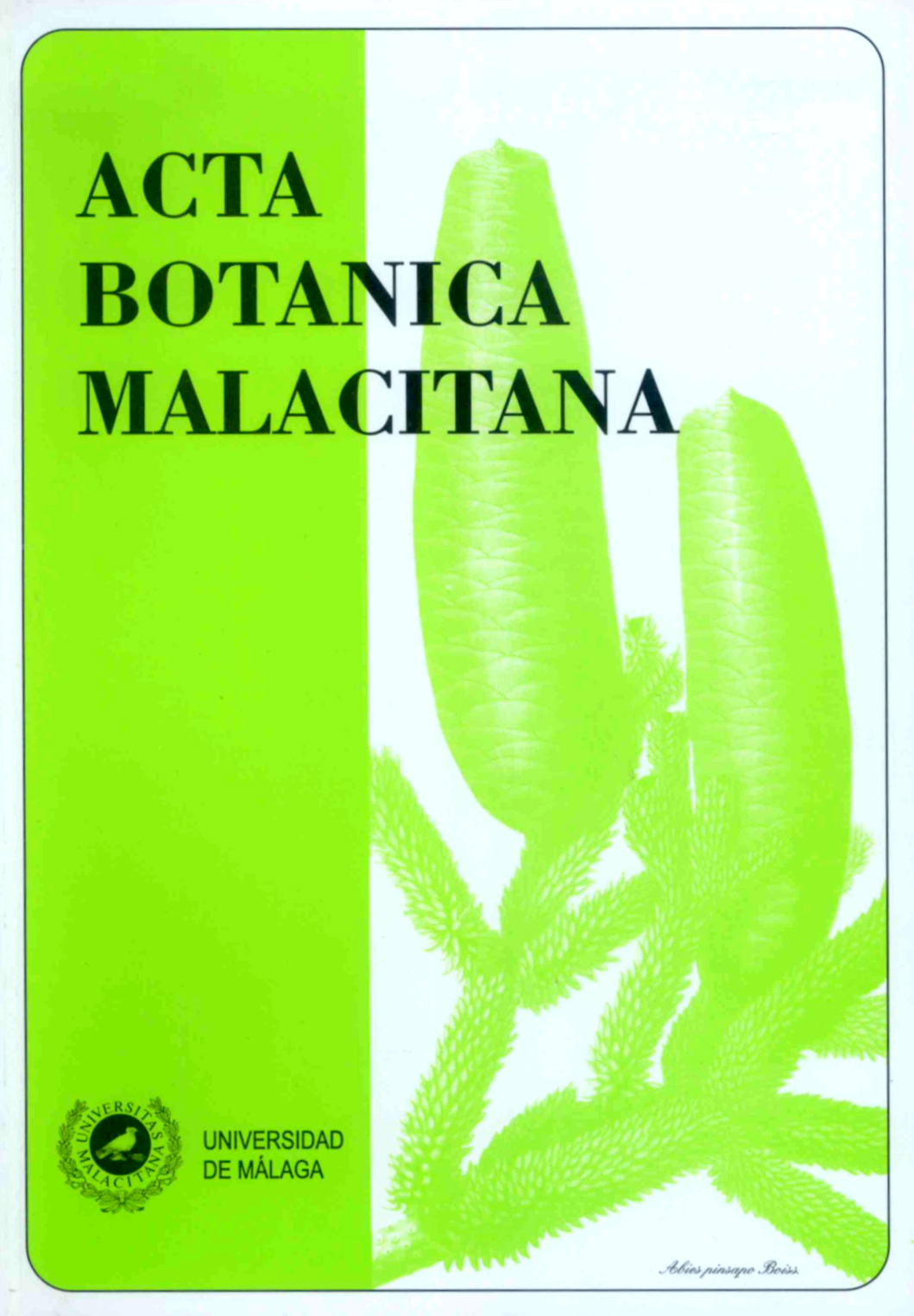Efficient DNA isolation from moroccan arar tree [Tetraclinis articulata (Vahl) Masters] leaves and optimization of the rapd-pcr molecular technique. Extraction efficace de l’ADN des feuilles du thuya de berberie (Tetraclinis articulata (Vahl) masters) et optimisation de la technique moléculaire rapd-pcr
DOI:
https://doi.org/10.24310/abm.v35i0.2863Abstract
English. Molecular genetic analysis of Arar tree [Tetraclinis articulata (Vahl) Masters] is often limited by the availability of fresh tissue and an efficient and reliable protocol for high quality genomic DNA extraction. In this study, two DNA extraction protocols were specifically developed for extracting high quality genomic DNA from Arar tree leaves: modified QIAgen DNA Kit and protocol developed by Ouenzar et al. (1998). DNA yield and purity were monitored by gel electrophoresis and by determining absorbance at UV (A260/A280 and A260/A230). Both ratios were between 1.7 and 2.0, indicating that the presence of contaminating metabolites was minimal. The DNA yield obtained ranged between 20 to 40 µg/g of plant materiel. The Ouenzar and collaborators protocol gave higher yield but was more time consuming compared to QIAgen Kit. However, both techniques gave DNA of good quality that is amenable to RAPD-PCR reactions.Additionally, restriction digestion and PCR analyses of the obtained DNA showed its compatibility with downstream applications. Randomly Amplified Polymorphic DNA profiling from the isolated DNA was optimized to produce scorable and clear amplicons. The presented protocols allow easy and high quality DNA isolation for genetic diversity studies within Arar tree.
Français. Les analyses en génétique moléculaire chez le thuya de Berberie [Tetraclinis articulata (Vahl) Masters] sont souvent limitées par la disponibilité du matériel végétal frais et le temps nécessaire pour l’extraction l’ADN ainsi que par sa qualité. Dans cette étude, deux protocoles d’extraction, à partir des feuilles du thuya, de l’ADN génomique de haute qualité, ont été développés : le Kit Qiagen et le protocole mis au point par Ouenzar et al. (1998) modifiés. La qualité et la quantité de l’ADN sont évaluées par électrophorèse sur gel d’agarose et par la mesure de l’absorbance en UV à (A260/A280) et (A260/A230). Ces deux rapports varient entre 1,7 et 2,0 indiquant la faible fréquence des métabolites contaminants. Le rendement d’ADN varie entre 20 et 40 µg/g du matériel végétal. Le protocole de Ouenzar et collaborateurs donne le meilleur rendement d’ADN mais nécessite plus de temps. Néanmoins, les deux protocoles donnent un ADN de bonne qualité utilisable dans les réactions RAPD-PCR. En outre, la restriction enzymatique et l’analyse PCR de l’ADN obtenu ont montré sa compatibilité avec les applications moléculaires ultérieures. Les paramètres intervenant dans les réactions RAPD ont été optimisés. Les protocoles présentés permettent l’extraction facile de l’ADN de haute qualité nécessaire pour des études de la diversité génétique au sein du thuya.
Downloads
Metrics
Downloads
Published
How to Cite
Issue
Section
License
All information related to the licensing of published works in Acta Botanica Malacitana and copyright can be found in our Editorial Policy.







1.png)
